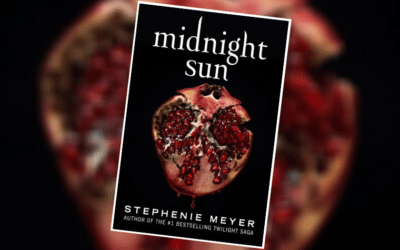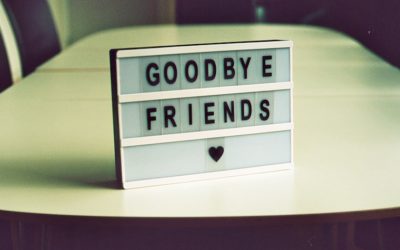The Origin
The Ancient Egyptians did what they could with leeches and henna to keep their gray hair as black as possible. And while Roman prostitutes were required to have light hair, they mostly achieved it with wigs and ashes. The main component of most hair dyes was created accidentally while a chemist was trying to find a cure for malaria, but bleach blondes didn’t hit the hair color scene until the 1930’s and Jean Harlow’s Platinum Blonde.
Was this what passed for foreplay during the Great Depression? Well, color me greatly depressed.
This movie made Jean Harlow a household name, coined the term “Blonde Bombshell,” and might have killed the star. Check out the story of how they got her hair that blonde … Clorox AND ammonia. Unreal. I didn’t know I had a woman who died too young and too tragically to thank for the color I ask for when I sit down at the salon. It’s sad, really. All us bottle blondes chasing something so fake it (maybe, allegedly) killed its progenitor.
The Stereotype
It took a couple more decades and a few dozen other bottle blondes to lead us to the most iconic of them all, Marilyn Monroe. Famously fake blonde, Monroe took the look and made it a motive. Girls who go blonde “have more fun” … so they must not be all that serious. The entire plot of Gentlemen Prefer Blondes revolves around Monroe’s character being an assumed gold digger and party girl, and let’s face it … a slut. Thanks, Norma Jean, you brunette.
But after an entire era of these types of films, the stereotype in our culture was set. Women who dared to eschew the housewife-preferred Clairol in favor of a more processed look must have ulterior motives in mind.
 100% sure she didn’t say this, except probably, she did say something this dumb.
100% sure she didn’t say this, except probably, she did say something this dumb.
In the 80s being blonde meant rocking huge damage-ridden coiffures that Def Leppard would be jealous of, the kind of hair that was the opposite of natural – it looked scary. But being blonde back then also meant being in control. It was obvious it was fake. You didn’t have to try to be vulnerable or sweet and you weren’t hiding your hair being processed. It was a power move. I mean, I guess. I was a brunette baby with a page boy in the 80s. But women finally took the stereotype over from the Howard Hugheses and Howard Hawkses of the golden age, and made it something to FLAUNT. God bless those styleless punk rockers who are now probably grandmothers. GOD BLESS THEM.
The Style
Going blonde has as many iterations as any other hair coloring does. It just has more stigma as something nefarious. If the ladies of the 80s upended the stereotype, the chicks of the 90s made bottle blondes a source of shame. Popular actresses of the era were AGGRESSIVELY brunette – Winona Ryder (Edward Scissorhands excepted), Janeane Garofolo, Liv Tyler, Cindy Crawford, Neve Campbell, Naomi Campbell, Courtney Cox – to the detriment of their dumber, blonder counterparts.
But still the bottle blonde prevailed. I carried around this publicity photo of Sharon Stone in the 1998 movie Sphere for a couple of years.
Every time I went to the hairstylist, I pulled it out and asked for this cut. They would always ask, “You want the color too? You would love being blonde.” I never said yes. I was a serious actress/writer/student. I was a BRUNETTTTEEEE. Blonde felt like Emma Woodhouse, and I was Elizabeth Bennett. Or I was just scared; I could never pull the trigger on bleaching.
Until I gained a butt load of confidence in my 30s. I’ve always been a fairly confident person. Despite the usual teenage insecurities and anxieties, I’ve lived my life fairly sure of myself, my look, my impression on people. My hair was always something I had complete control over. Once I got my first pixie cut in high school, I learned to trim it myself and I started living in the hair dye section at Walgreens, changing my color with the seasons (reds for fall, blacks for winter, purples to transition from spring back to brunette summer).
But the blonde eluded me. It felt TOO bold, even for someone who was regularly purple-headed. But when I finally did it I was VERY ready. I wanted to stand out. I wanted to be bright. I wanted to be a bottle blonde. I wanted to be Emma Woodhouse.
The Reasons I Love Being A Bottle Blonde
It’s Bright
I mentioned this (several times in this one blog post sorry), but I’m not in any way a natural blonde. I wasn’t blonde as a toddler. I didn’t even get blonde highlights after a summer at the beach. I’m a reddish-brunette. As I’ve aged, my hair has gotten darker, but it’s never ever been blonde. But even so, it was a fairly brightly lit brown. Lit up red in the sun. But nothing is as eye catching as a full head of platinum.
Eye-catching like at the first Outlander fan event where you could see nothing but my tiny Q-tip head every time someone asked a fan question. BLONDE BETH FTW.
It’s Neutral
(Can something be both bright and neutral? YES. BLONDE HAIR CAN). Blonde hair goes with everything. It doesn’t matter what I want to wear, it looks better when I’m blonde. All black? Yes. Mousy browns? Yep. Pink? Of course. Bright patterns? Blonde tones them down and makes them look cooler. All white? I will be your Dancing Druid fantasy that day. There have been days when I was a deep red head that I put on a favorite pink and maroon sweater and looked and felt like the bottom of a shoe. NEVER SO when I’m blonde.
It’s Damaged
Yes. You read that correctly. The damage that 7 years of bleaching has done to my hair may never be undone. But in the meantime, I’ve gotten thick, textured, shiny hair that I could never achieve with other colors or naturally. Bleach ruins your hair, but if you have really fine, thin hair, it also thickens it about 200%. When my roots start to grow in, I can very literally see the difference in the circumference of each hair shaft as it moves from blonde to brunette.
The result? I tried growing my hair out last year and going back brunette. So it could rest, get healthy and because I wanted to have something besides a pixie cut for awhile. I couldn’t handle it. My hair was limp, flat, even though it was well-cut, well-styled and still colored. It just wasn’t DAMAGED enough to look HEALTHY.
It’s Fun
Ok, this part of the stereotype is true. Being a bottle blonde IS fun. It’s fun in the salon because you get to stay much longer and come back sooner than people with other hair colors. But watching your brassy orange post-bleach turn into ash grey or platinum after toning in nothing more than a miracle. “What’s it gonna be this time?” Always fun.
I get a LOT of compliments on my hair. Part of that is the cut (because my stylist is a genius, and it’s always unique), but usually I get others complimenting the color. When blonde, and especially platinum, is done correctly, it’s stunning. Not to mention, when your friends go blonde, you get to get excited with them, share fave purple shampoos and trade toner secrets.
It’s Yours
Whatever you make of your blonde, whether you go full platinum, light ash, highlights and lowlights and everything in between, don’t let anyone make you feel weird for abandoning your brown/black/red for its brighter cousin. Be the baddest bitch, be a bookish nerd, be a homebody, be a senator. Be a bottle blonde.
Blondes I Love
THE Blondie … and my future #HairGoals, roots and all.
NO SHAME. I love this look, Tay
NENE! Sleek, sophisticated, swooped. Right.
Will defend til my fingernails are bloody stumps
This was a hot look, Hils
Pink is the GOLD standard for platinum pixie cut perfection. (Please see: Michelle Williams for Never Gonna Win This Prize With That Mushroom Cut and Anne Hathaway for Brassy Not Sassy).
This Former Brunette on the right




